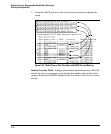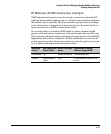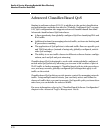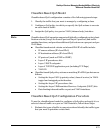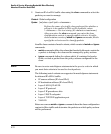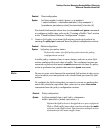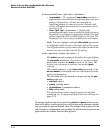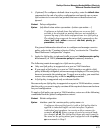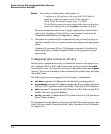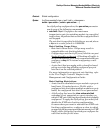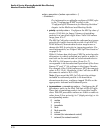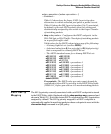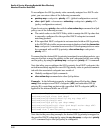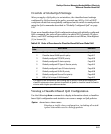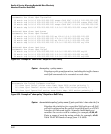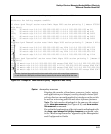
Quality of Service: Managing Bandwidth More Effectively
Advanced Classifier-Based QoS
Syntax: vlan <vlan-id > service-policy <policy-name > in
Configures a QoS policy on the specified VLAN that is
applied to inbound traffic on the VLAN interface.
Valid VLAN ID numbers range from 1 to 4094.
The QoS policy name you enter must be the same as the policy
name you configured with the policy command in Step 2.
For more information about how to apply a QoS policy to an interface,
refer to the “Applying a Service Policy to an Interface” section in the
“Classifier-Based Software Configuration” chapter.
6. Determine the additional QoS configurations that you need to apply to
each QoS-capable device in your network and configure the appropriate
policy.
(Optional) If you want 802.1p (CoS) priority settings to be included in
outbound packets, configure tagged VLANs on the appropriate down-
stream links.
Configuring QoS Actions in a Policy
In QoS policy-configuration mode, you define the actions to be applied to a
pre-configured IPv4 or IPv6 traffic class when a packet matches the match
criteria in the class. (Actions are not executed on packets that match ignore
criteria.) You can enter multiple action statements in a traffic class, including
the default class.
The following actions are supported in a QoS policy configuration:
■ rate-limit command: Configures the rate-limit for matching packets.
■ ip-precedence command: Configures (marks) the IP precedence bits in the
ToS byte of IPv4 packet headers and Traffic Class byte of IPv6 headers.
■ dscp command: Configures the DSCP bits in the IPv4 ToS byte and IPv6
Traffic Class byte of packet headers.
■ priority command: Configures the 802.1p class of service (CoS) priority in
Layer 2 frame headers.
For information on the difference between the DSCP bits and precedence bits
in the ToS byte of an IPv4 header and the Traffic Class byte of an IPv6 header,
see Figure 6-13.
6-76



